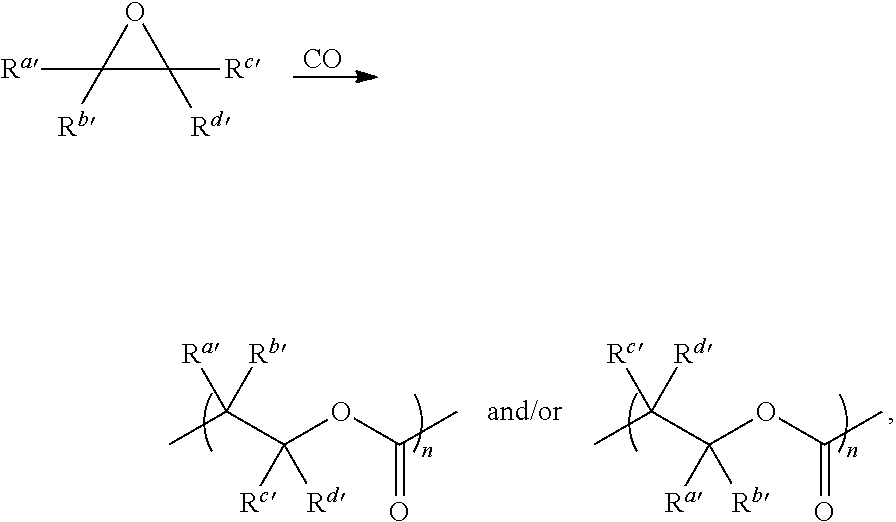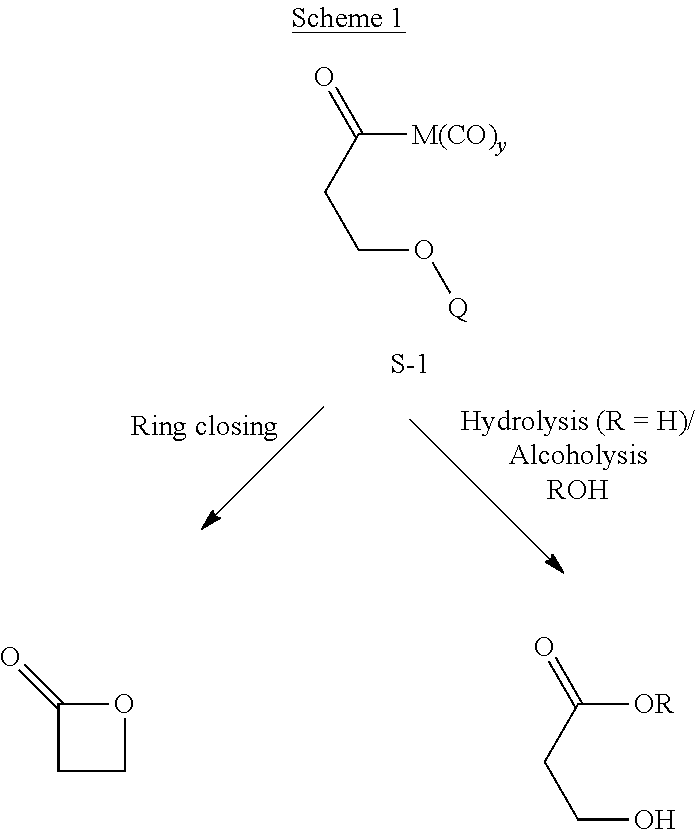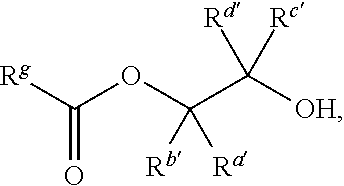Catalysts and methods for polyester production
a technology of catalysts and polyester, applied in the preparation of carboxylic compounds, physical/chemical process catalysts, other chemical processes, etc., can solve the problems of long reaction time and high catalyst loading, and achieve the effect of high yield
- Summary
- Abstract
- Description
- Claims
- Application Information
AI Technical Summary
Benefits of technology
Problems solved by technology
Method used
Image
Examples
example 1
Polymerization Using a Lewis Acid / Cobalt Carbonyl Complex Catalyst
[0209]A tetrahydrofuran solution of [(tpp)Al][Co(CO)4](1 molar equiv.) in a stainless steel pressure reactor is brought to 400 psi (2750 kPa) CO and 50° C. Ethylene oxide (100 molar equiv.) and ethanol (10 molar equiv.) are added to this solution and the total reaction pressure is increased to 800 psi (5500 kPa) with CO. The reaction is maintained at this pressure and temperature and the reaction is monitored. When product formation is complete, the reactor is cooled to room temperature and depressurized.
example 1b
[0210]This example is performed using the same procedure as Example 1, but utilizing a ratio 1000 molar equivalents of ethylene oxide and 20 molar equivalents of ethanol. This example leads to formation of beta propiolactone with a higher average molecular weight than Example 1.
example 1c
[0211]This example is performed using the same procedure as Example 1b, but substituting R-propylene oxide for ethylene oxide.
PUM
| Property | Measurement | Unit |
|---|---|---|
| molar ratio | aaaaa | aaaaa |
| molar ratio | aaaaa | aaaaa |
| molar ratio | aaaaa | aaaaa |
Abstract
Description
Claims
Application Information
 Login to View More
Login to View More - R&D
- Intellectual Property
- Life Sciences
- Materials
- Tech Scout
- Unparalleled Data Quality
- Higher Quality Content
- 60% Fewer Hallucinations
Browse by: Latest US Patents, China's latest patents, Technical Efficacy Thesaurus, Application Domain, Technology Topic, Popular Technical Reports.
© 2025 PatSnap. All rights reserved.Legal|Privacy policy|Modern Slavery Act Transparency Statement|Sitemap|About US| Contact US: help@patsnap.com



